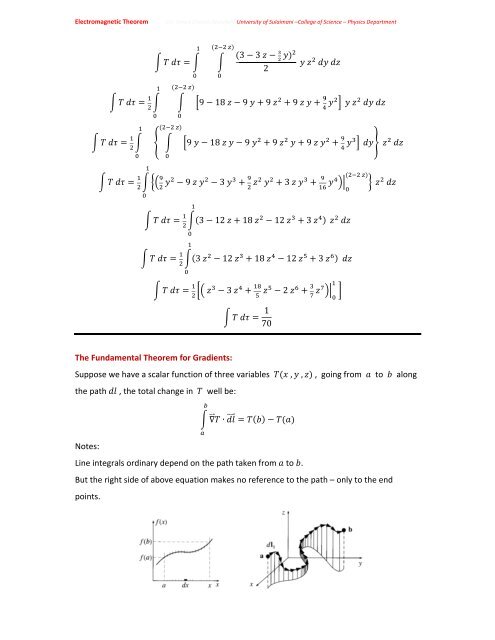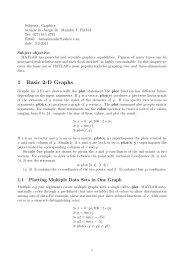Chapter One: Vector Analysis The use of vectors and vector analysis ...
Chapter One: Vector Analysis The use of vectors and vector analysis ...
Chapter One: Vector Analysis The use of vectors and vector analysis ...
Create successful ePaper yourself
Turn your PDF publications into a flip-book with our unique Google optimized e-Paper software.
Electromagnetic <strong>The</strong>orem<br />
(Dr. Omed Ghareb Abdullah) University <strong>of</strong> Sulaimani –College <strong>of</strong> Science – Physics Department<br />
<br />
<br />
<br />
<br />
<br />
<br />
9 3 3 <br />
<br />
<br />
<br />
<br />
<br />
<br />
<br />
<br />
<br />
<br />
<br />
<br />
<br />
<br />
9 18 <br />
9 9 9 <br />
<br />
<br />
312 <br />
18 12<br />
3 <br />
<br />
<br />
<br />
3 12 18 12 3 <br />
<br />
<br />
<br />
<br />
<br />
<br />
<br />
33 <br />
2<br />
918 <br />
9 9 9 <br />
<br />
1 70<br />
<br />
<br />
3 <br />
<br />
<br />
2 <br />
<br />
<br />
<br />
<strong>The</strong> Fundamental <strong>The</strong>orem for Gradients:<br />
Suppose we have a scalar function <strong>of</strong> three variables , , , going from to along<br />
the path , the total change in well be:<br />
Notes:<br />
Line integrals ordinary depend on the path taken from to .<br />
But the right side <strong>of</strong> above equation makes no referencee to the path<br />
– only to the end<br />
points.<br />
<br />
∙
















